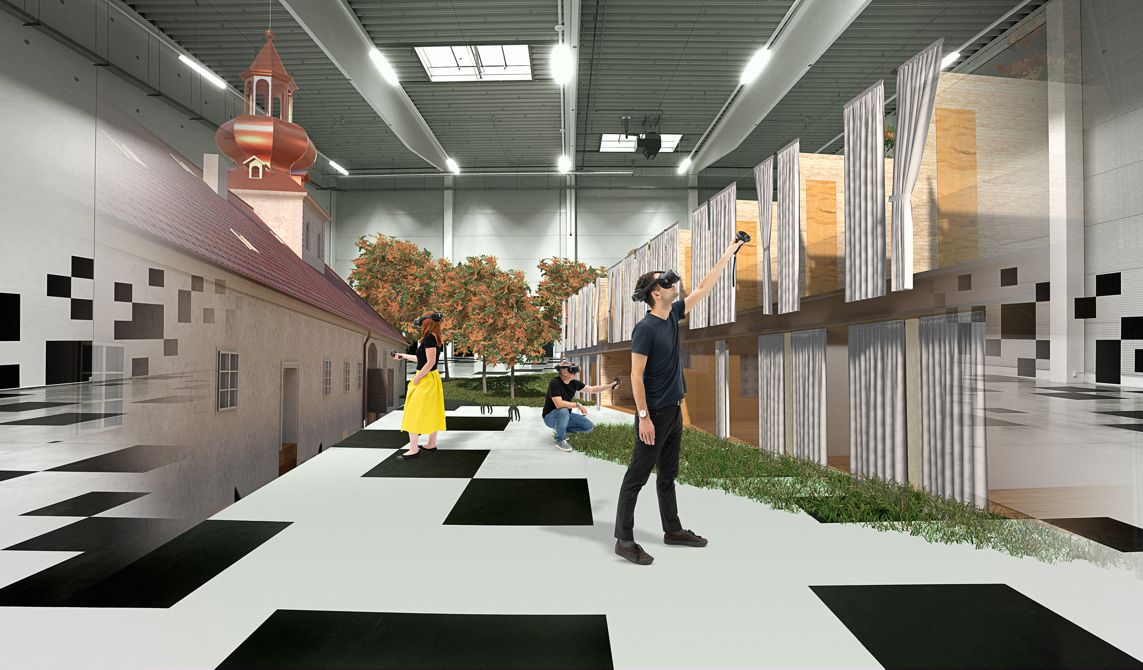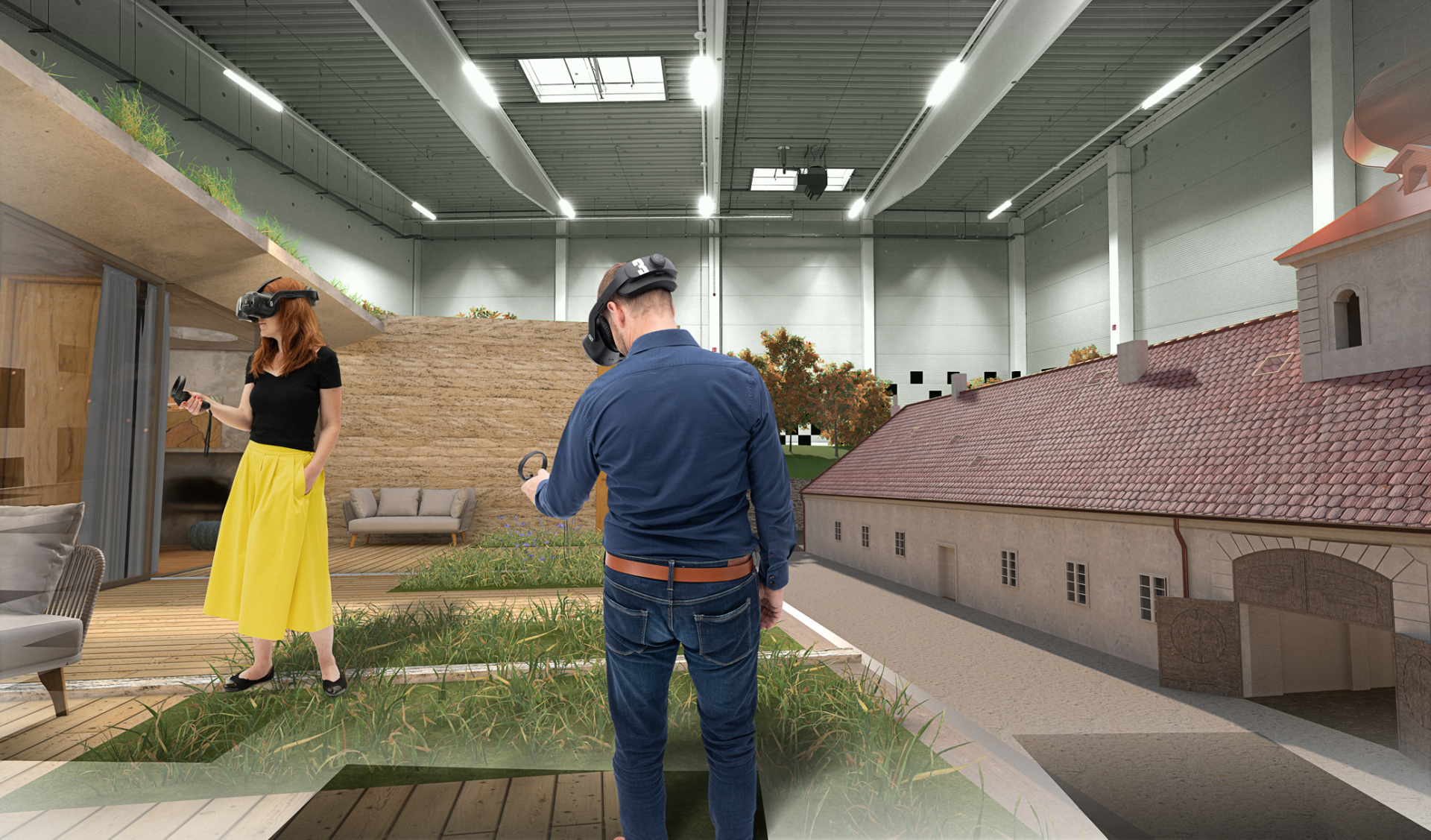A model of the project exists in life-sized virtual reality, and architects and experts in paediatric hospice care can tour it using a VR headset at the Virtuplex. The model is based on plans created by the team at the Petr Hájek Architekti studio, and the VR model allows them to collaborate and remove problems before the building is completed in 2026.
We discussed the use of virtual reality in building the Cibulka children’s hospice with the project head, architect František Brychta.
What is Cibulka like in virtual reality?
In a word: fascinating! It’s just what I imagined and what we all want. Even at this point, we can try it out, “feel” our way around, and walk around inside; all that without the actual structure, which allows us to make many changes and avoid complications. It’s only later in the process when we usually see something isn’t going to work as we had imagined. That’s not true in virtual reality. It can do everything, and very quickly. That’s where I see real value: Whatever you imagine or design can be transferred into VR.
What Made You Decide to Work with the Virtuplex?
We had to see in advance something that no one had ever done before here, at least in a rough form. Our vision for a children’s hospice is unprecedented in the Czech environment. No matter how based we are in foreign projects, no one has any practical experience with its designs or approval processes here. But you can tour everything in advance with virtual reality, and most importantly show it and consult it with stakeholders and experts, nurses, doctors, health officials, and historical preservationists.
What were your expectations for this form of cooperation and for using virtual reality in architecture in general?
The first time I used virtual reality in this way was actually at the Virtuplex. Maybe that’s why my expectations were later shown to be unrealistic and didn’t reflect where the technology is today. I thought there would be a bit more editability and we’d have the possibility of changing the proposal then and there. That doesn’t change the fact the virtual model of Cibulka turned out to be a very effective tool that revealed many details that would have been problematic during construction. We could see whether the structure corresponded to our visions in terms of size and organization. That was the main thing. That means the ultimate vision we had for working with the Virtuplex was fulfilled.
What specific changes did you make to the design based on the tour in virtual reality?
Most often these were details, such as we decided that we wouldn’t put the bathrooms at the end of the hallway. It would complicate the entrance to the last room, so we moved them elsewhere. The architectural design on paper is one thing, but how the hallways of the hospice will actually be used, walking the hallways and testing how nurses will move two-metre beds that can be quite heavy in individual rooms, for example, is quite another. As Cibulka is meant for ailing children, that means an age group of 0-18 with various levels of mobility and different weight categories, and therefore we must consider all the permutations.
Does virtual reality provide anything to experienced master architects and who have a perfect sense of space?
That is a wholehearted yes. Virtual reality gives you certainty in advance, which is real peace of mind. You can look at all scenarios in advance; examine rooms from every angle; walk through them and test how people in the hospice will move around. That all gives you a greater feeling surety that the entire project has been designed well.
In your opinion, what was the main benefit of using virtual reality in this project?
On one hand it’s the certainty that what you put on paper works in reality. However, I think it’s primarily an excellent tool to present to all stakeholders beginning with the client all the way through municipal and other officials. They all can get a better idea about the project than from just an architectural study printed on paper.

Looking away from the children’s hospice project, what do you think of using virtual reality and other modern technologies in architecture?
I’m a rather conservative person and I’m not a fan of revolutionary technologies. However, the benefits of virtual reality for architecture are unequivocally positive and it’s an especially fantastic tool for larger projects with sufficient human and financial resources. At this point I wouldn’t say virtual reality is a widely available tool appropriate for anyone planning to build a home. On the other hand, I can see the technologies is constantly advancing and is becoming available to a wider range of users. So we’ll see what the coming years will bring…

